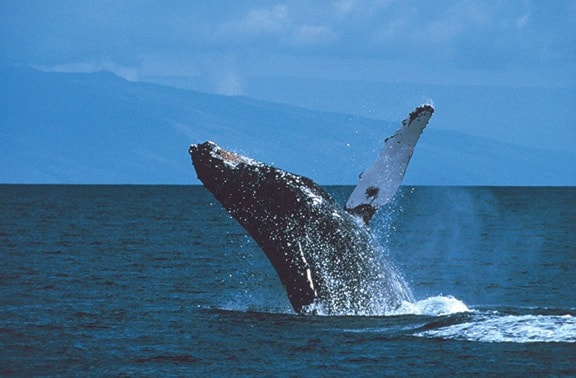It’s been a great summer for whales in B.C. waters if you go by the news, with headlines such as “Orca calves ‘growing like weeds,’” the report of a fin whale in Puget Sound and the further sighting along the B.C. coast of no fewer than 5,000 whales in 12 days by a scientific expedition.
What makes these numbers more impressive is the fact that humpbacks, once hunted in these waters to the point of extinction, have made a major comeback according to the U.S. National Oceanic and Atmospheric Administration Fisheries office.
It’s hoped that the young fin whale, a descendant of the few survivors of his species which roamed the Pacific Northwest in considerable numbers before commercial whaling decimated them, will make the Pacific Northwest his home.
Long before whaling became an industry, Nootka Indians braved Pacific swells in cedar canoes that were often dwarfed by the very creatures they hunted. The graduate of a dangerous and trying apprenticeship, a whaler held great prestige in native culture.
It was in 1866 that B.C.’s original commercial whaling began, at Mill Bay, when Scotsmen James Dawson and Alexander Donaldson built a station, consisting of a wharf, a reduction plant and employee housing, on the northern boundary of what’s now the Malahat First Nation. They hired Kanakas, experienced whalers from the Hawaiian Islands, to hunt the California grey whale which frequented B.C. waters.
Jack Fleetwood, late Valley historian, wrote of the time several of the whalers, fired up on bootleg whiskey, stole food and a company boat and headed for Washington Territory. Donaldson followed, overtook them on Saltspring Island, and killed the ringleader in a knife fight.
Dawson found a new partner, Capt. Abel Douglas, and, financed by San Francisco investors, their schooner Kate began operations in adjacent waters but quickly depleted the local resource. Records show that 2,400 gallons of oil ($12 per gallon) was extracted from eight whales at Mill Bay before they had to move their operation to Cortes Island in 1869. There they struck paydirt, five whales yielding a total of 13,000 gallons of oil.
Ten more of the 50-foot-long humpbacks fell victim that lucrative first season. The following year, Dawson and Co. moved their headquarters to Hornby Island, hence Whaling Station Bay. By 1871 they were listed on the stock exchange as the B.C. Whaling Co. Ironically, as the late Maud Emory noted in 1961, “catches were smaller than in previous years. Whales were reported to be numerous north of the Euclatah [sic] Rapids, but scarce south of that area.
“By January of 1872, whales had become so scarce in the [Strait of Georgia] that the B.C. Whaling Co. went into liquidation, and in March of 1872, the entire plant and effects of the company, including the schooner Kate, and a pre-emption claim on Hornby Island of 100 acres, with a well-built wharf, frame buildings, cooper’s shed, were sold at auction.”
James Dawson and his associates may have been the first to try whaling on a commercial scale although Hudson’s Bay Co.’s Sir George Simpson had unsuccessfully urged his employers, as early as 1842, to included harpooners in the crew of the company’s steamship, Beaver.
Whalers, incidentally, were interested only in the mammal’s oil which, in the late 1860s and early ‘70s, brought $1.20 a gallon on New York markets; 20th century whalers joked that “nothing is wasted but the smell!” (As anyone unfortunate enough to live downwind of a whale processing plant could bitterly attest.)
In 1905 the Victoria Whaling Co. was founded; over ensuing years the original organization went under the names Canadian Northern Fisheries, Pacific Whaling Co., and the Consolidated Whaling Co. Stations were established in the Queen Charlotte Islands (Haida Gwaii) at Rose (thereby for a time making a liar of Shakespeare) and Naden harbours, and on the west coast of Vancouver Island at Sechart and Cachalot in Kyuquot Sound.
As had been the case of Dawson and partners, business went well in earlier seasons, the firm’s annual income often exceeding $1 million. But in almost 40 years of operation the annual catch dropped from 1,200 whales to the hopeless total of 163 in 1942. The fact that Japan, once the biggest customer for B.C. whale products, was at war with us sealed Consolidated Whaling’s doom.
Jack Fleetwood recalled having seen the “rotting stubs of the wharf in the sands of Malahat Beach in 1927, and also the remains of buildings along the lagoon... The sea, in its turbulence, still revealed the occasional disintegrating whale rib — mute evidence of a once-thriving industry in Cowichan Country.”
www.twpaterson.com
